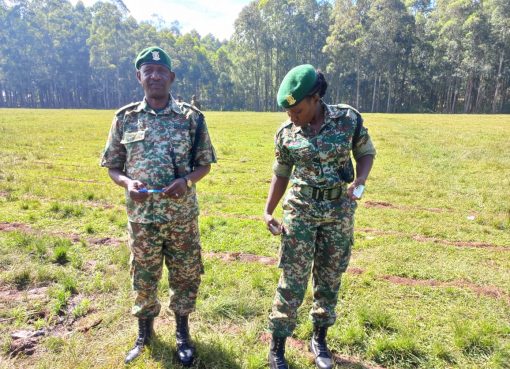The Desert Locust invasion in Kenya will be here for a longer period hence will require better coordination among all stakeholders involved, Agriculture Cabinet Secretary Peter Munya has said.
Current reports indicate that so far, about 183 swarms have settled in the country and of this, 157 have been controlled reflecting an 86 percent success rate in control efforts, Munya added.
However, the CS noted that more swarms are expected to invade and settle in the months of February and March based on projections by FAO’s Desert Locust Information Office (DLIS).
“There is need to ensure that the swarms are controlled before the long rains season since the rains create conducive environment for the Desert Locust to thrive,” he added.
Speaking during a high-level emergency Desert Locust consultative meeting in Nairobi Monday, the CS added that the government has recently requested the Food and Agriculture Organisation (FAO) to work with partners to develop a Desert Locust Management Strategy.
“In this strategy, FAO will be working with International Fund for Agricultural Development (IFAD) and Emergency Locust Response Project (ELRP) to address the menace in the long term and will be done in consultation with County governments,” Munya said.
The CS explained that the second wave of the Desert Locust invasion which began in November last year has so far affected 20 counties.
“We received reports of the first swarms coming in through Mandera, Wajir, Garissa in November and by December all the way to January, this had spread to Marsabit, Isiolo, Samburu and for the first time the coastal counties of Lamu, Tana River, Kilifi and Taita Taveta. Other counties affected now include Machakos, Kitui, Laikipia, Tharaka Nithi, Nyandarua, Nakuru and Elgeyo Marakwet,” Munya said.
He noted that although a lot has been done so far, more still needs to be done considering that the during the first invasion in 2019, government had established six regional control bases but with the second wave, two more have been established bringing the total to eight.
Munya confirmed that a developed Plan of Action on Desert Locust Management that was launched sometime back in in Naivasha requires at least Sh3.2 billion.
“In the plan, we are looking at three main components of desert locust management, namely ground and aerial surveillance, ground and aerial control and lastly, livelihood protection and recovery,” he said.
However, for sustainability and to tread on the side of caution due to non-predictive nature of desert locust invasion, CS Munya said that the government has made provisions in the coming days to boost stocks through the World Bank funded ELRP project to ensure that control will be sustained till the end.
He spoke of challenges posed including insecurity, poor infrastructure, accessibility to protected areas and inadequate storage and transportation facilities adding the meeting would take a pragmatic approach to address them
FAO representative to Kenya, Amb. Carla Mucavi said as the second wave unfolds, FAO will continue to monitor closely its effects on livelihoods and will respond appropriately including through conducting an impact assessment.
She noted that the desert locust control is a very expensive affair to maintain saying that the first wave FAO Kenya alone appealed for USD 32 million(Sh3.5 billion) out of which they received about USD 20 million(Sh2.9 billion).

“FAO Kenya alone has for the second wave put an appeal of USD 8 million(Sh872 million) out of which we have already received USD 2 million (Sh218 million),” she said.
Amb. Mucavi explained that FAO’s prediction is that the wave will continue and may be more intense hence the need for collective engagement to control it early enough before the long rain season crops are in the fields.
She appealed for more support from all the stakeholders and close working relations with the teams present namely the national and County Government to control activities especially on the ground.
“Our control activities must be sensitive to environmental considerations and must as well be targeted. I would appeal to all of us that we inform the public on some important facts,” Amb. Mucavi said, while reiterating the importance of containing the insects within recession areas through preventive control.
Desert Locust is a unique migratory pest that has the potential to ravage crops and pasture across regions. Here in Kenya, Desert Locust invasion poses a serious threat to achievement of one of the pillars of the Big Four Agenda – attainment of 100 percent food and nutrition security in the country.
by Wangari Ndirangu





